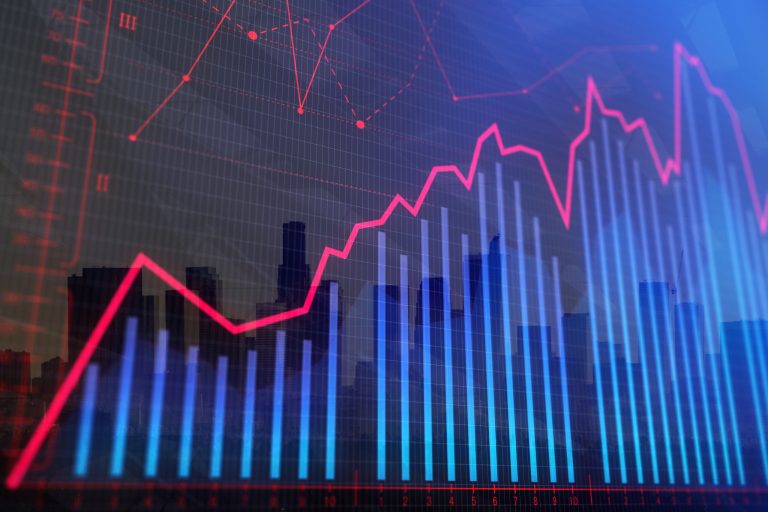Asian stocks rose on Tuesday, reaching their highest levels in more than two-and-a-half years, as a fresh wave of Chinese stimulus measures bolstered market sentiment.
Investors were further encouraged by expectations of additional US interest rate cuts, which continued to pressure the US dollar.
China’s top financial regulators unveiled a comprehensive package of economic measures aimed at reviving growth.
The government announced a 50-basis-point cut in bank reserves and a reduction in mortgage rates, steps designed to tackle the nation’s sluggish economic performance.
Stimulus measures larger than anticipated, markets react
The impact was immediate, as Chinese stocks surged. The blue-chip CSI300 Index opened 1% higher, and the broader Shanghai Composite Index also gained 1%.
Hong Kong’s Hang Seng Index rose by more than 2% in early trading, while the mainland properties index surged 5%.
MSCI’s broadest index of Asia-Pacific shares outside Japan gained 0.41%, reaching 588.43—its highest level since April 2022.
“While there was some anticipation that stimulus measures would be announced after they mentioned there was going to be a press briefing, the package of measures so far, I would say, is probably larger than what the market was expecting,” said Khoon Goh, head of Asia research at ANZ in a Reuters report.
Taken as a whole, this could help support the economy. Whether or not it is sufficient to address some of the underlying issues, particularly around the lack of confidence in the economy, I think still remains to be seen.
Focus on central banks as rate decisions loom
Investors also turned their attention to the Reserve Bank of Australia (RBA), which was expected to maintain its current interest rates during its policy meeting later in the day.
Despite the US Federal Reserve’s recent 50-basis-point cut, expectations of a similar move by Australia were mixed.
“The RBA is likely to stick to its hawkish stance for now, aiming to keep inflation expectations anchored,” said Charu Chanana, head of currency strategy at Saxo in the Reuters report.
A potential pivot may come only at the Nov. 5 meeting, depending on further labour market data and the Q3 CPI report.
Meanwhile, Japan’s Nikkei Index saw the largest early trading movement, jumping 1.4% to hit a near three-week high.
Investors were keenly awaiting a speech by Bank of Japan Governor Kazuo Ueda, which is expected to provide more insights into the central bank’s next steps.
In the US, stocks closed slightly higher on Monday as traders continued to digest the Federal Reserve’s recent decision to cut interest rates.
Markets remain divided on whether the Fed will cut rates by 25 or 50 basis points in its next meeting.
The CME FedWatch tool showed that markets were pricing in 76 basis points of easing by the end of the year.
Brown Brothers Harriman Senior Markets Strategist Elias Haddad, however, expressed caution.
“The market is overestimating the Fed’s capacity to ease,” Haddad said.
However, it will likely take strong US jobs data to trigger a material upward reassessment in Fed funds rate expectations.
The next critical data point will be the US non-farm payrolls report, due on October 4.
Until then, Haddad believes that a dovish Federal Reserve and strong economic fundamentals will maintain market sentiment and continue to weaken the dollar.
Dollar under pressure, oil prices edge higher
The US dollar remained under pressure as global risk sentiment improved.
The dollar index, which tracks the greenback against six major currencies, was at 100.95, hovering near a one-year low of 100.21 reached last week.
The Japanese yen held steady at 143.65 per dollar, while the euro was also little changed at $1.11055.
The euro had dropped 0.5% on Monday after weak business activity data in the eurozone raised expectations for further rate cuts by the European Central Bank.
The Australian dollar dipped 0.15% to $0.6828 but remained close to the nine-month high it had touched on Monday.
In commodities, oil prices saw slight gains in early trading. Brent crude futures rose 0.26% to $74.09 a barrel, and US crude futures were up 0.3% to $70.60.
Oil prices had slipped on Monday due to concerns over weakening demand and poor economic data from Europe, but they stabilized as trading progressed.
Asian stocks are experiencing a surge as China’s economic stimulus measures take effect, though the future remains dependent on upcoming central bank decisions in Australia, Japan, and the US.
The pressure on the US dollar continues as investors navigate the broader economic outlook.
The post Chinese stimulus pushes Asian markets to highest level in 2.5 years appeared first on Invezz

